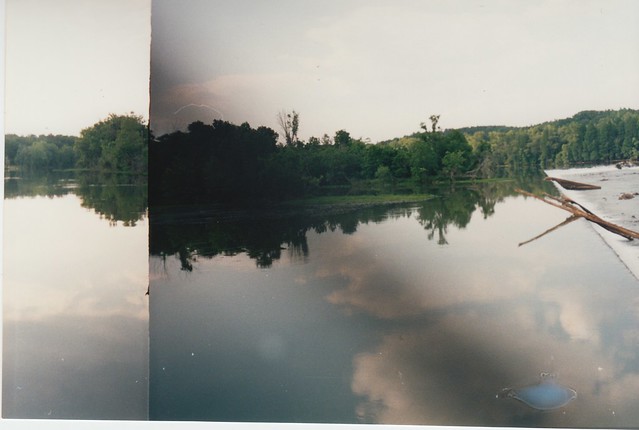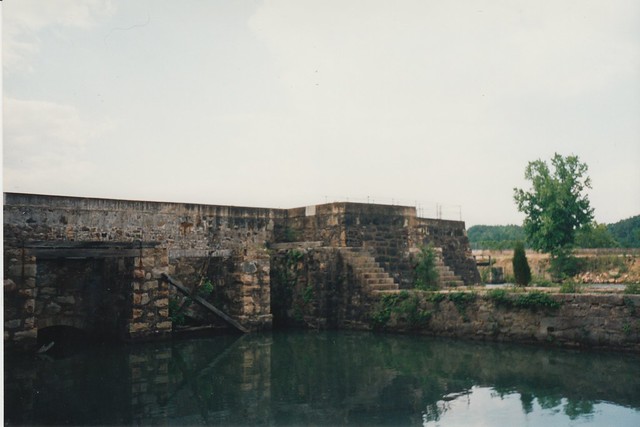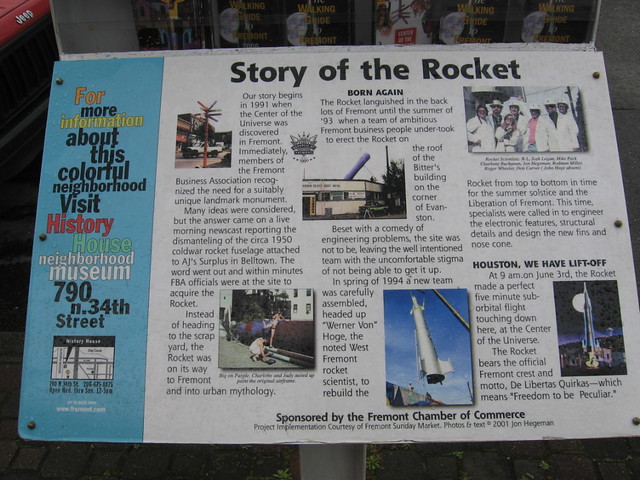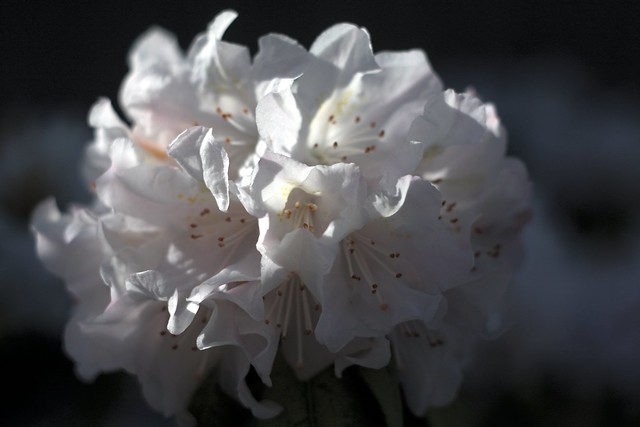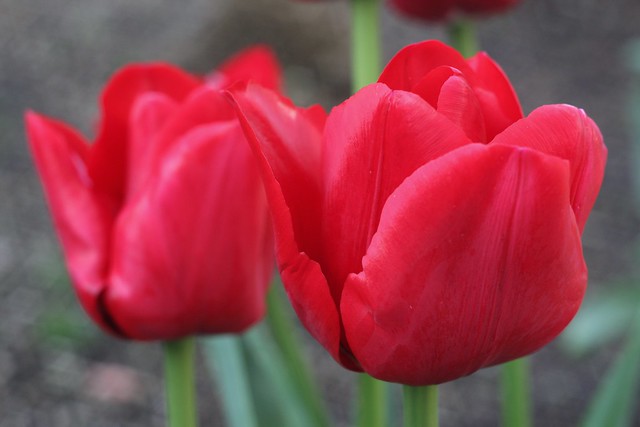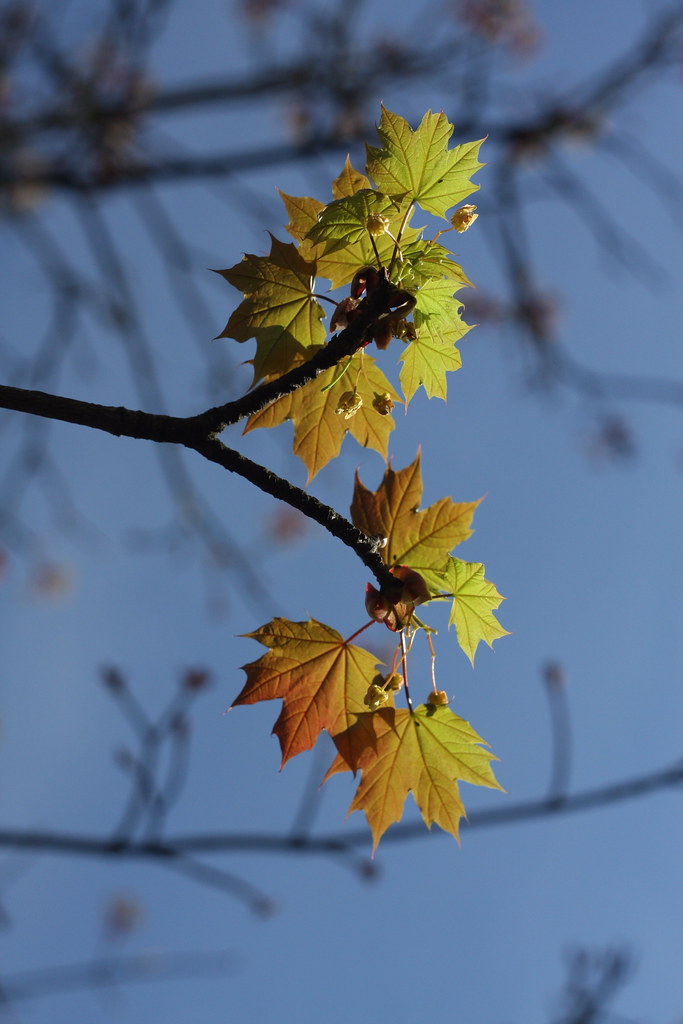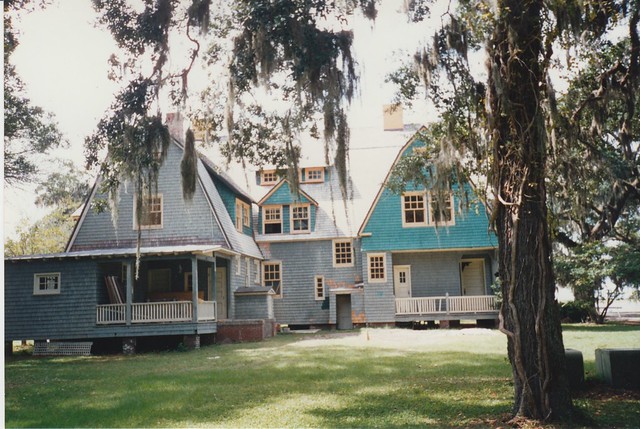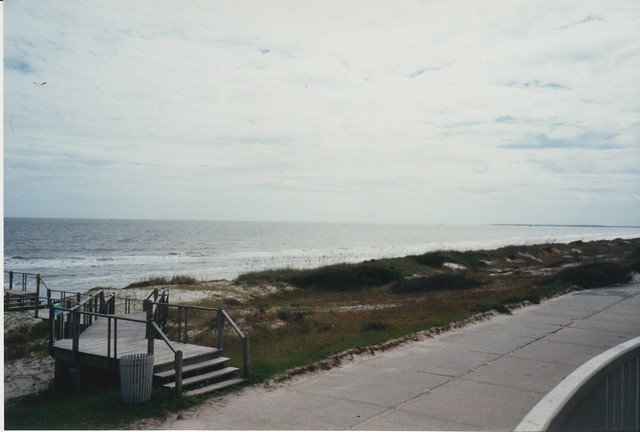You might recall I've been doing a series lately about historic bridges along the Columbia River Highway. Today's installment takes us to by far the most photographed of them all. This, of course, is the Benson Bridge, the famous footbridge at Multnomah Falls, as seen in every Oregon calendar ever created, and every tourist guide to Portland ever written. The bridge carries a hiking trail that continues on to the top of the falls, although casual tourists often stop and turn around here.
The bridge was in the news back in January when it was damaged and temporarily closed by a falling boulder, and the bridge is still closed as I'm writing this. These photos were taken well before the big boulder crash, so you can see what it's supposed to look like, and hopefully will look like again soon.
The bridge was designed by Karl P. Billner, who also designed many of the road bridges along the old highway, including the ones at Shepperds Dell and Latourell Falls. So although the Benson Bridge obviously isn't part of the highway, it shares what today would be called a common design language: They share the basic concrete deck arch design, and even the railing style is the same as the other bridges. To my untrained eyes it looks like a scaled-down copy of the Shepperds Dell bridge, but its Historical American Engineering Record entry explains it has a variety of unique features, things that you probably have to be a practicing civil engineer to really appreciate.
I've always been curious whether the bridge was controversial when it first went in. Multnomah Falls was already a famous scenic landmark at the time, and adding a bridge significantly altered its appearance. If there wasn't already a bridge here in 2014, and someone proposed building one, it would be hugely controversial and I can almost guarantee you the plan wouldn't go through. I checked the Multnomah County Library's Oregonian database in case there were any nervous editorials or outraged letters to the editor. I haven't come across any, however, and I think I understand why not.
The key detail is that when the bridge was built, starting in August 1914, the land around the falls was still owned by Simon Benson, a local timber baron and philanthropist. He's probably best known for donating the Benson Bubbler drinking fountains located around downtown Portland, and he's appeared here before in connection with the Benson Tower, a recent condo tower on the original site of his downtown mansion, which was relocated to the PSU campus some years ago. Benson would soon donate the area to the City of Portland, but when the bridge was built, Multnomah Falls was still Benson's personal waterfall and legally he could pretty much do whatever he wanted with it. Since he happened to be in a philanthropic sort of mood, he paid for the bridge himself and somehow borrowed the state's highway engineers to design it.
The actual construction was subcontracted out to R.L. Ringer, who also built the Crown Point Viaduct up around the Vista House. Ringer apparently took a great deal of pride in his work here, and secretly left his name and the date in the wet concrete, with the idea that he probably ought to sign his masterpiece. His superiors later ordered him to cover it up, which he did... with clay that matched the surrounding concrete. So when he checked back a year or so later, the clay had worn off and the initials were exposed again. Subsequent restoration efforts (including a major restoration in 1987, and a smaller effort as recently as 2012) have been careful to preserve this inscription. I'm not sure where exactly it's located on the bridge; hopefully it survived the recent boulder incident.
The bridge's resemblance to the highway's bridges gave at least one person the wrong idea. There was a strange incident in 1932 in which someone drove a tiny Austin 7 automobile up the Multnomah Falls trail and photographed it parked on the bridge. I wouldn't believe it without photos, and even with them I'm still kind of incredulous. The way the car's facing suggests Mr. C.W. West of Portland managed to drive up to the bridge and across it, then turned around somewhere and did this photo shoot on the way back to the lodge. The caption's written as if this was just an amusing stunt someone pulled on a lark, and there's no mention of anyone being arrested over this, or even park rangers wringing their hands and telling the damn fool public to knock it off fer chrissakes.
Anyway, because I am a dork, I always get that one Enya song from Fellowship of the Ring stuck in my head when I see this bridge. You know the one:
